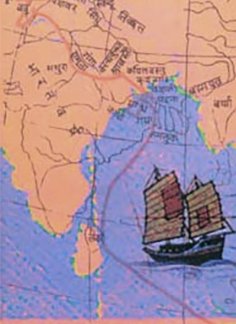Mahaparivena, Maha-parivena, Mahāpariveṇa: 2 definitions
Introduction:
Mahaparivena means something in Buddhism, Pali, the history of ancient India. If you want to know the exact meaning, history, etymology or English translation of this term then check out the descriptions on this page. Add your comment or reference to a book if you want to contribute to this summary article.
In Buddhism
Theravada (major branch of Buddhism)
Source: Pali Kanon: Pali Proper NamesA building attached to the Jetavana vihara at Anuradhapura (Cv.l.67). Aggabodhi I. built the Bhinnorudipa vihara and gave it, with endowments, to an incumbent of the Mahaparivena (Cv.xlii.26) while Aggabodhi VII. enlarged the parivena by the addition of a pasada (Cv.xlviii.65). This was later destroyed by fire and rebuilt by Sena I. (Cv.l.67).
Theravāda is a major branch of Buddhism having the the Pali canon (tipitaka) as their canonical literature, which includes the vinaya-pitaka (monastic rules), the sutta-pitaka (Buddhist sermons) and the abhidhamma-pitaka (philosophy and psychology).
India history and geography
Source: archive.org: Ceylon Branch of the Royal Asiatic Society 1963Mahāpariveṇa is the name of a building which forms part of the Jetavanārāma temple complex situated in Anurādhapura.—The Mahā-pariveṇa or Ratna-mā-piriveṇa was probably built by Mahāsena (275-301), the founder of the Vihāra. Aggabodhi VI (733-772) added a Pāsāda to it. Sena I (833-853) rebuilt the Pāsāda after it had been destroyed by fire. In an inscription of Mahinda VI (956-972) at the so-called “Buddhist Railing” ruins, are mentioned the Water Pavilion at the Gate, the Ratna-mā-piriveṇa and the Senevirad college in Denā Rajamahavehera.
The Jetavanārāma complex (including Mahā-pariveṇa) was founded by Mahāsena (275-301) in the Jotivana Park on territory within the precincts of the Mahāvihāra. The king built it for the Mahāthera of Dakkhiṇa-vihāra. The Jetavanārāma monks were of the Sāgaliya sect which first established itself at Dakkhiṇa-vihāra in the year 253.

The history of India traces the identification of countries, villages, towns and other regions of India, as well as mythology, zoology, royal dynasties, rulers, tribes, local festivities and traditions and regional languages. Ancient India enjoyed religious freedom and encourages the path of Dharma, a concept common to Buddhism, Hinduism, and Jainism.
See also (Relevant definitions)
Partial matches: Parivena, Maha.
Full-text: Bhinnorudipa.
Relevant text
Search found 1 books and stories containing Mahaparivena, Maha-parivena, Mahā-pariveṇa, Mahāpariveṇa; (plurals include: Mahaparivenas, parivenas, pariveṇas, Mahāpariveṇas). You can also click to the full overview containing English textual excerpts. Below are direct links for the most relevant articles:
Dipavamsa (study) (by Sibani Barman)